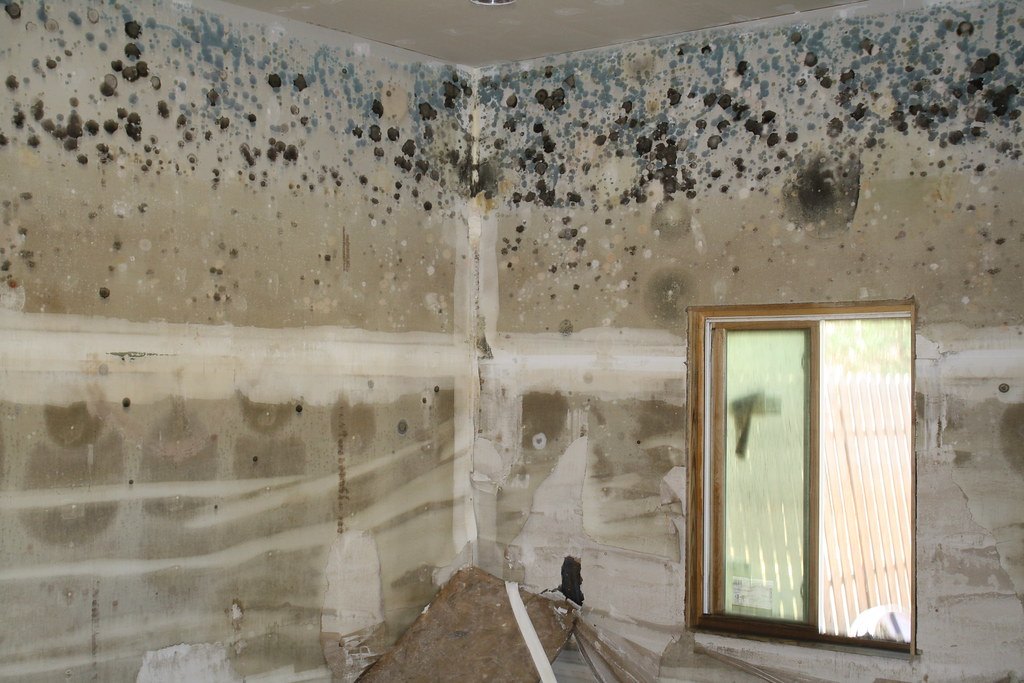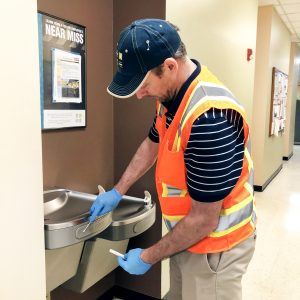May 13, 2021

Mold present in home.
Hurricane floodwaters can pose structural and safety hazards. Wind-driven rain can also cause extensive building materials damage even when floodwaters are not present. Below are a few tips for the hurricane recovery process:
- Ensure that qualified assessment and cleanup companies properly conduct critical activities to return to your home or reopen your business.
Post-hurricane, water-damaged building materials may need to be dried out, cleaned, or replaced. Mold growth can begin within 24-hours in humid and warm conditions. Standing water and sediment, if present, may be contaminated and will need to be removed. Older buildings may contain asbestos and other hazardous building materials. Learn more in a Texas Department of Insurance Recovery and Cleanup Safety Fact Sheet.
- Work with your insurance company and response agencies to ensure proper protocol for reimbursement.
Engage and hire qualified companies to assess and abate buildings impacted by stormwater and associated sediment and debris. Download a Report for Professional Cleaning and Restoration Contractors provided by the Restoration Industry Association, The Institute of Inspection Cleaning and Restoration Certification, and the American Industrial Hygiene Association.
- Review any contract in detail.
Contact your insurer to file your claim. Be sure to let your insurer verify what repairs are necessary, then find a licensed contractor to make the necessary repairs. The contract should detail the scope of work, schedule, and costs. Make sure the contractor you hire has liability and workers compensation insurance and is licensed and bonded. Never pay upfront, pay in installments as the job is completed. Keep excellent records of your payments. Verify that the work was done before paying all the invoices. Check your local Better Business Bureau or your state’s attorney general’s office to see if complaints have been filed against the contractor. Plan ahead and have an environmental consultant and a restoration contractor ready to go.
- On occasion, additional sampling and documentation may be needed to show occupants that the building is clean.

Environmental Project Manager swabbing the handle of a water fountain.
In some instances, documentation of a “clean building” may be required before occupants return to a home or business. A report compiling assessment and abatement actions, waste and debris disposal, and air and surface sample results may provide a complete cleanup story. Indoor air sampling for mold, volatile compounds and possible other contaminants can be conducted. In addition, surface wipe samples can be analyzed for mold and bacteria. Water supply fountains and spigots are sometimes analyzed to determine water quality. Engage your environmental consultant to document cleanup and confirmation sampling results to satisfy possible building occupant health and safety concerns.
Contact Us
S&ME can assist in the following disaster response services:
- Moisture mapping of impacted building materials
- Asbestos assessments and abatement plans and specifications
- Mold and indoor air quality assessments and abatement consulting
- Hazardous materials inventory, assessment, and clean-up consultation
- Post-flood recognized environmental condition (REC) assessments
- Industrial hygiene/health and safety consultation
- Evaluation of contaminated water and water-supply wells
- Property Condition Assessments
- Drone Technology investigations
For more information on disaster response services, please contact:
